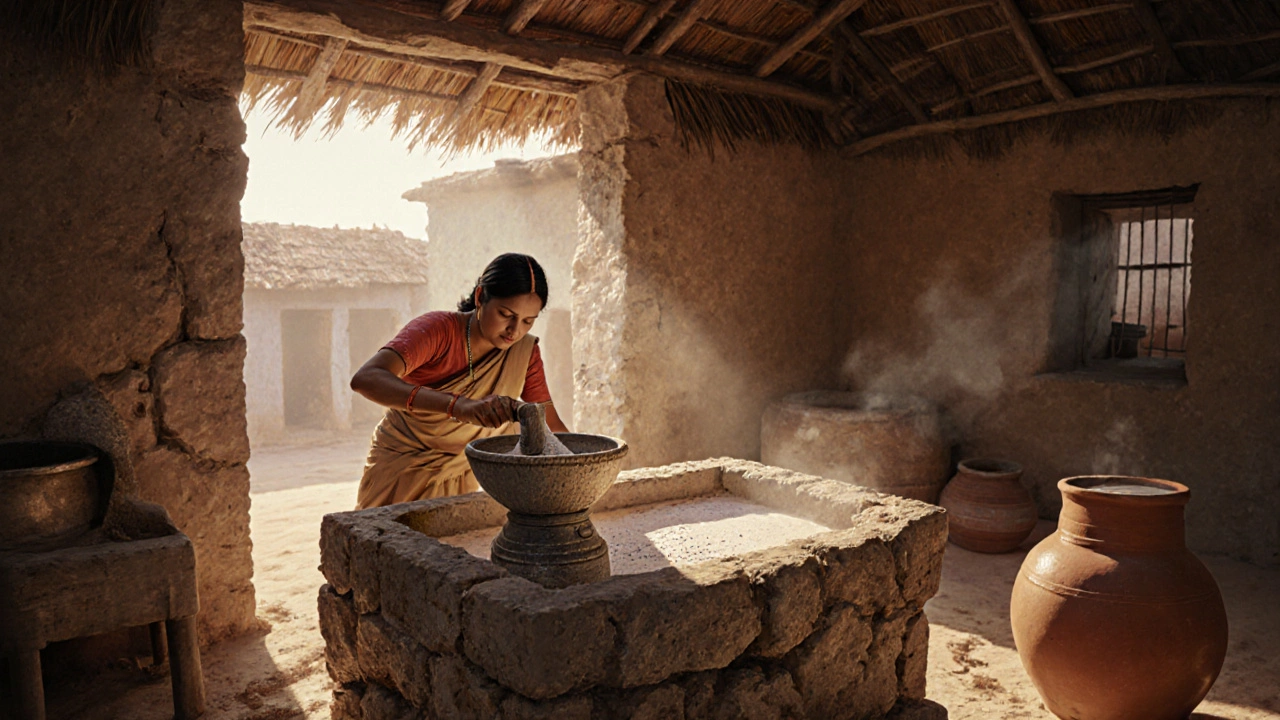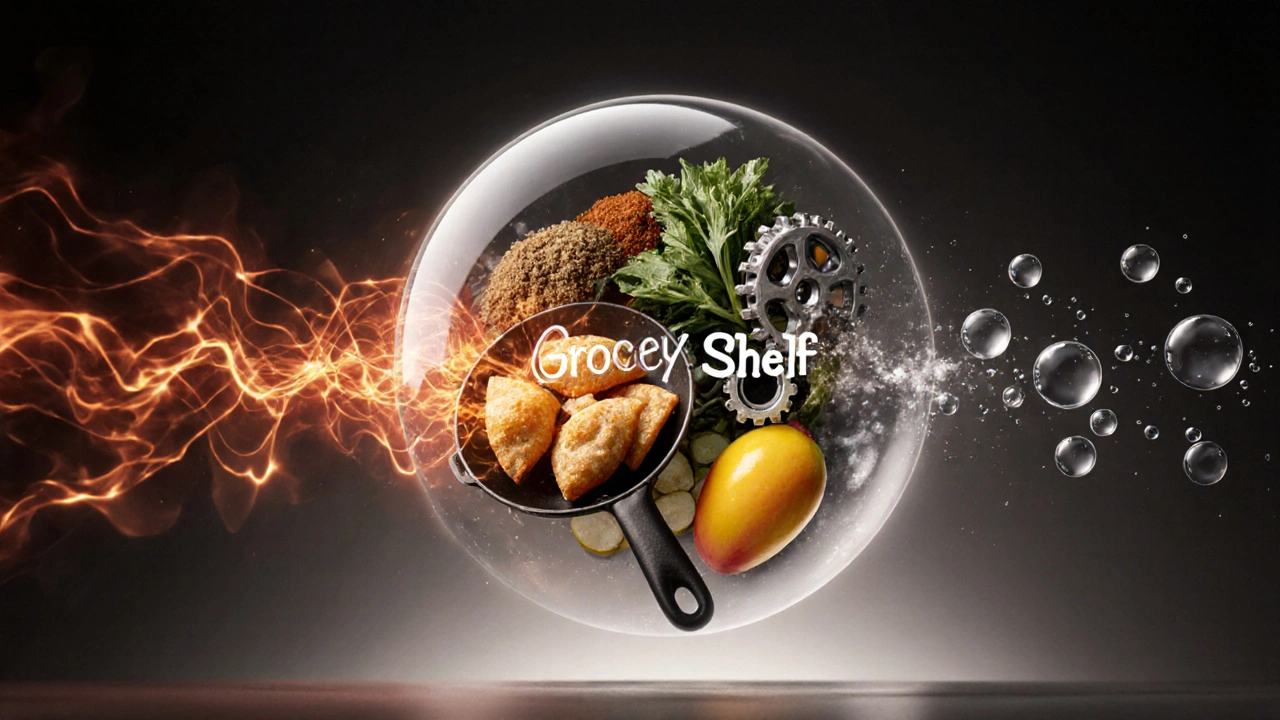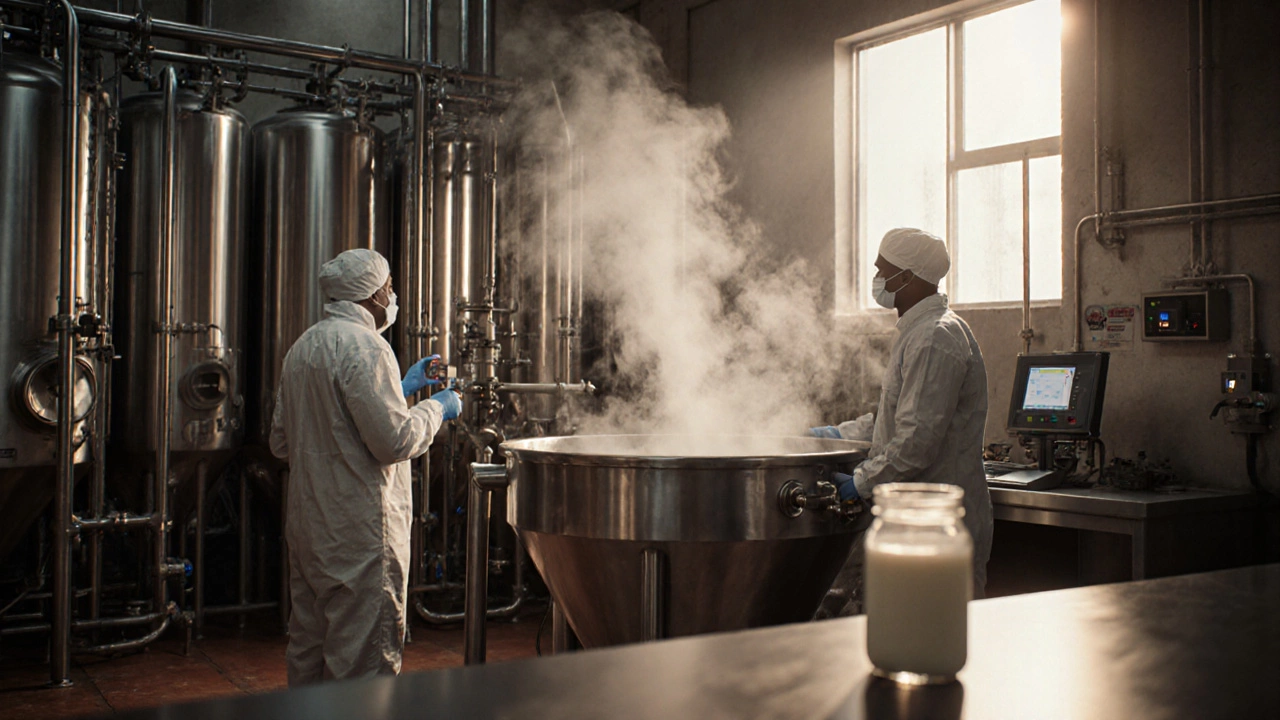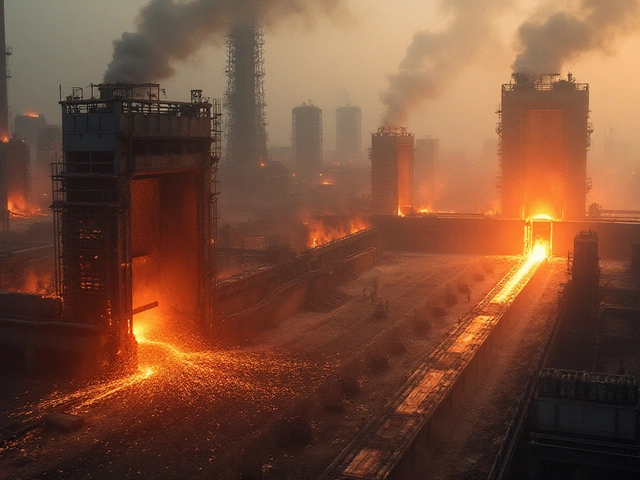When you buy a pack of frozen peas, a carton of UHT milk, or a jar of pickled mango, you’re not just buying food-you’re buying the result of food processing. It’s not magic. It’s science, engineering, and tradition working together to make food safer, last longer, and taste better. But not all food processing is the same. There are three major types that cover nearly every product you find on a grocery shelf: thermal processing, mechanical processing, and chemical processing. Each one does something different. And knowing how they work helps you understand what’s really in your food.
Thermal Processing: Heat as the Hero
Thermal processing is the oldest and most common method. It uses heat to kill harmful bacteria, stop spoilage, and change the texture of food. Think canning, pasteurization, and sterilization. These aren’t just buzzwords-they’re life-saving techniques.
Pasteurization, for example, heats milk to 72°C for 15 seconds. That’s enough to destroy pathogens like E. coli and Salmonella without turning milk into soup. It’s why you can drink milk without worrying about getting sick. Canning goes further: food is sealed in jars or cans, then heated to 121°C under pressure. That kills even the toughest spores, like those from Clostridium botulinum, which can cause deadly botulism.
Thermal processing doesn’t just preserve. It transforms. Roasting coffee beans, baking bread, or blanching vegetables before freezing-all rely on heat to unlock flavors, soften fibers, or deactivate enzymes that cause browning. In India, you see this in the making of ghee, where milk is slowly simmered to remove water and solids, leaving pure fat that lasts for months without refrigeration.
It’s simple, reliable, and works with almost anything. But it’s not perfect. Heat can destroy vitamins like C and B1. That’s why fortified cereals and juices add back nutrients lost during heating.
Mechanical Processing: Shaping, Separating, Grinding
Mechanical processing doesn’t change food chemically. It changes its shape, size, or structure. It’s the physical side of food processing-cutting, grinding, mixing, pressing, and separating.
Think of flour. Wheat grains go through rollers that crack them open. Then sifters separate the bran, germ, and endosperm. The endosperm becomes white flour. The bran and germ? They’re sold as bran flakes or used in animal feed. That’s mechanical processing at work.
In India, traditional stone grinders (chakki) still turn lentils into dosa batter. Modern factories use high-speed disc mills to grind spices into powder. Oil extraction? Seeds like mustard or coconut are pressed in hydraulic or screw presses. The oil comes out. The leftover cake becomes animal feed.
Mechanical processing also includes sorting and washing. Fruits and vegetables move along conveyor belts past cameras that spot bruises or discoloration. Water jets rinse off dirt. Air blowers dry them. All before they’re packed. This step doesn’t extend shelf life by itself, but it’s critical for safety and quality. A single piece of dirt or metal can ruin a whole batch.
One thing to remember: mechanical processing often prepares food for other types of processing. Ground meat becomes sausage. Juiced oranges become concentrate. Separated milk becomes cream and skim milk. It’s the first step in turning raw ingredients into finished products.

Chemical Processing: Adding, Removing, Transforming
Chemical processing uses substances-natural or synthetic-to alter food’s composition. It’s where preservatives, emulsifiers, acids, and enzymes come in. This type often gets a bad rap, but not all chemical processing is artificial or harmful.
Fermentation is a natural form of chemical processing. Yogurt, idli, dosa batter, kimchi, and soy sauce all rely on microbes like bacteria and yeast to break down sugars and create lactic acid or alcohol. That acid preserves the food and gives it tangy flavor. In India, fermentation is deeply rooted in tradition. Fermented rice and black gram batter for idlis can last for days without refrigeration.
Then there’s acidification. Pickling uses vinegar or lemon juice to lower pH and stop bacteria. Mango pickle, lime pickle, or even canned tomatoes with citric acid-all use this. Salt curing and smoking also fall here. Salt draws out water, making it hard for microbes to survive. Smoke adds antioxidants and antimicrobial compounds.
Modern chemical processing adds things like ascorbic acid (vitamin C) to prevent browning in apple slices. Calcium propionate keeps bread from molding. Lecithin keeps oil and water mixed in salad dressings. These aren’t toxins. They’re tools. The FDA, FSSAI, and WHO set strict limits on how much can be used. Most are safe at approved levels.
But there’s a catch. Overuse of chemical additives can mask poor quality. If a product tastes bland, adding flavor enhancers like MSG might cover it up. That’s not processing-it’s deception. Good chemical processing enhances. Bad processing hides.
How These Types Work Together
No food product uses just one type. Most combine all three.
Take ready-to-eat samosas. The dough is mechanically mixed and rolled. The filling is mechanically chopped and cooked (thermal). Then spices, salt, and preservatives are added (chemical). Finally, the samosas are fried (thermal) and vacuum-packed (mechanical) to extend shelf life.
Instant noodles? Flour is mechanically milled. Noodles are shaped by extrusion (mechanical). Then they’re steamed and fried (thermal). Flavor packets contain salt, MSG, and dried vegetables treated with antioxidants (chemical).
Even something as simple as bottled juice goes through multiple stages: washing (mechanical), pressing (mechanical), pasteurizing (thermal), adding vitamin C and citric acid (chemical), and filling into sterile bottles (mechanical).
Understanding this helps you read labels. If you see “pasteurized,” you know heat was used. If you see “contains preservatives,” chemical processing was involved. If it’s ground, sliced, or pureed, mechanical processing did the work.

Why It Matters for You
Food processing isn’t the enemy. Raw food can be dangerous. Unpasteurized milk has killed people. Improperly canned food causes botulism. Raw meat carries E. coli. Processing saves lives.
But it’s also where cheap ingredients become expensive products. Some companies use heavy processing to turn low-quality raw materials into shelf-stable snacks full of sugar, salt, and artificial flavors. That’s not bad because it’s processed-it’s bad because it’s unhealthy.
The key is balance. Choose minimally processed foods when you can: whole grains, fresh vegetables, plain yogurt. But don’t fear processed food entirely. Frozen vegetables are often more nutritious than “fresh” ones that sat for weeks. Canned beans are a cheap, shelf-stable protein source. UHT milk lasts months without refrigeration-critical in areas with unreliable power.
Food processing lets us eat safely, affordably, and year-round. It’s not about avoiding it. It’s about understanding it. Know what’s being done to your food. Ask why. Read labels. Make informed choices.
What You Can Do Today
- Check the ingredient list on your next snack. Can you identify any thermal, mechanical, or chemical processes behind each ingredient?
- Compare two versions of the same food: one plain (like plain yogurt) and one flavored. What additives are in the flavored one? Why?
- Try making something simple at home-like pickling cucumbers with vinegar and salt. You’ll see chemical processing in action.
Food processing isn’t going away. But you don’t have to be confused by it. Know the three types. Recognize them. Use them to make smarter choices.
Is all food processing bad for health?
No, not all food processing is bad. Thermal processing like pasteurization kills harmful bacteria and prevents foodborne illness. Mechanical processing like washing and cutting makes food safer and easier to eat. Chemical processing like fermentation and adding vitamin C can improve nutrition and shelf life. The problem isn’t processing itself-it’s when companies use it to turn low-quality ingredients into ultra-processed snacks full of sugar, salt, and artificial additives.
What’s the difference between mechanical and chemical processing?
Mechanical processing changes the physical form of food without altering its chemistry-like grinding, slicing, or pressing. Chemical processing changes the food’s chemical makeup-like adding vinegar to pickle, using enzymes to ripen fruit, or adding preservatives to stop mold. One changes shape; the other changes composition.
Are natural additives safer than synthetic ones?
Not necessarily. Natural doesn’t always mean safer. Some natural substances, like certain plant toxins, are more dangerous than synthetic ones. What matters is the dose and regulation. Both natural and synthetic additives must meet safety standards set by food authorities like FSSAI or FDA. A preservative like sodium benzoate (synthetic) is used in tiny amounts and is safe. A natural substance like mycotoxin from moldy nuts is dangerous even in small amounts.
Why do some foods need chemical processing to be safe?
Some foods naturally contain microbes or enzymes that cause spoilage or illness. Fermentation uses good bacteria to outcompete bad ones. Acidification lowers pH to stop harmful bacteria from growing. Canning with salt or vinegar creates an environment where pathogens can’t survive. Without these chemical steps, foods like fermented soy, pickled vegetables, or cured meats would spoil quickly or become dangerous.
Can I avoid all processed foods?
Technically, yes-but it’s not practical or always healthier. Even boiling water or baking a potato is a form of thermal processing. Most whole foods like rice, lentils, or milk go through some processing before they reach you-cleaning, drying, pasteurizing. The goal isn’t to avoid all processing, but to choose foods with minimal, transparent processing. Look for products with short ingredient lists and recognizable ingredients.





